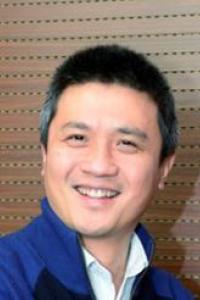Cheng-Zhi Peng, male, born in October 1976, is a professor of University of Science and Technology of China.
Since the quantum communication experiments, Cheng-Zhi Peng has been focusing on three core issues, which are the quantum information source, transmission channel and detection. He has been done the cross-study of two different channels of quantum communication (optical fiber and free space) experiments and traditional optical technology. He made some achievements in the field of practical decoy-state quantum key distribution and quantum communication based on entanglement. He has published 47 papers in Nature (1), NaturePhotonics (3), Nature Physics (1), PNAS (1), Physics Reports (1) and Physical Review Letters (9) , in which he is the first author or corresponding author (including common) of 18 papers. In 2012, his paper on 100 km free-space quantum teleportation and entanglement distribution was selected in the “Feature of the Year” of Nature; In 2013, his work on using of measurement devices independent quantum key distribution to solve the hidden consequences of quantum hacking was selected to the “Highlights of the Year“ of American Physical Society; In both 2010 and 2012, his achievements were selected to the "China's top ten scientific and technological progress news" that named by the academicians of the Chinese Academy of Sciences, the "Top Ten Progresses in Science in China" by the Ministry of Science and Technology, and the "National Eleventh Five-Year" Scientific and Technological Achievement Exhibition organized by the Ministry of Science and Technology. In addition to academic circles, he has made the first step on the practical application of quantum communication, including the 60th anniversary of the National Day parade, the Xinhua News Agency financial information quantum communication network, Hefei metropolitan area of quantum communication test demonstration network and other occasions for demonstration applications. These achievements attracted the government, banking, Internet and other areas of widespread concern. Therefore, his systematic research on long-distance quantum communication has promoted the development of quantum communication to the practical application. He has obtained the first Tan Kah Kee Youth Science Prize and the 13th China Youth Science and Technology Award. In 2015, as one of the main members, He won the National Natural Science Award First Prize (second completer) and the military scientific and technological progress award (sixth man).
In 2011, the “Mozi” quantum experiment satellite was approved by the Chinese Academy of Sciences as the space science pilot project. Cheng-Zhi Peng was appointed as the chief designer of science application system and vice-chief designer of the satellite system. The “Mozi” Quantum experiment satellite project will construct a wide-area quantum communication network including satellite, ground station and optical fiber metropolitan area network, and realize several scientific goals including global quantum key distribution, satellite-to-ground quantum entanglement distribution and ground-to-satellite quantum teleportation. Cheng-Zhi Peng is responsible for the design of the space-earth integrated experimental system, organization of satellite quantum entanglement source and other payloads, and quantum communication ground station and other scientific application system development. In 2015, he has completed the test of flight payloads and the construction of ground stations. Quantum satellites have been launched in August 2016, and will do the first global coverage wide-area quantum communication experiments in the world.
Related Publications
- Ground-to-satellite quantum teleportation. Nature 549, 70–73 (2017).
- Long-distance free-space quantum key distribution in daylight towards inter-satellite communication. Nature Photonics 11, 509-513 (2017).
- Satellite-based entanglement distribution over 1200 kilometers. Science 356, 1140-1144 (2017).
- Satellite-to-ground quantum key distribution. Nature 549, 43–47 (2017).
- Two-Hierarchy Entanglement Swapping for a Linear Optical Quantum Repeater. Physical Review Letters 119, 1-6 (2017).
- Experimental Ten-Photon Entanglement. Physical Review Letters 117, 210502 (2016).
- Near-Transform-Limited Single Photons from an Efficient Solid-State Quantum Emitter. Physical Review Letters 116, 213601 (2016).
- Experimental round-robin differential phase-shift quantum key distribution. Physical Review A 93, 030302 (2016).
- Post-processing Free Quantum Random Number Generator Based on Avalanche Photodiode Array. Chinese Physics Letters 33, 030303 (2016).
- Experimental Passive Round-Robin Differential Phase-Shift Quantum Key Distribution. Physical Review Letters 114, 180502 (2015).
